How do You Measure Light?
When one wants to measure the quantity of light, one has to refer to five metrics or parameters that describe it. This is all part of the science of photometry, which deals with the quantification of the amount of light. There is also the science of colorimetry, which deals with identifying and analyzing the colours in a light source. In this article, the five photometric parameters are first discussed and then the focus turns to colorimetric parameters. In photometry, one only deals with the visible range between 400-700 nm and any light outside of this range is ignored. Any photometric parameter outside of this range will have a value of zero. There are also other definitions of the visible light wavelength range and in other definitions, the visible range is 380-780 nm but for the purpose of this article, it is specified from 400-700 nm. The first photometric parameter is called the “luminous intensity” which describes the intensity of light and is measured in the units of candela. One candela is the intensity of light coming from a candle light which used to be a standard way of measuring light intensity. The origin of this unit goes back to the plumber’s candle which was used to melt the lead solder in order to join the water pipes.
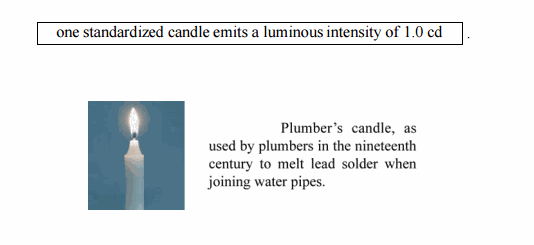
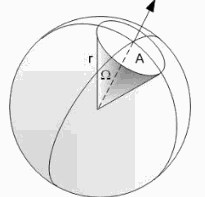
Figure 2: Solid angle definition.
The relation between Ω, A and r is given by Ω=Ar2 where Ω is the solid angle, A is the area on the sphere intersected by the cone as shown in figure 2 and r is the radius of the sphere. Since the surface area of a sphere is 4πr2, the maximum solid angle possible is 4πr2/r2=4π steradians.
The second important quantity for photometric measurements is the “luminous flux” which is the amount of light flowing through a solid angle. It is measured in units of “lumen” which is defined as the quantity of light flowing through a solid angle of one steradian from a source of one candela. For example, if one keeps a light source of luminous intensity of one candela at the center of a sphere, the luminous flux flowing through a spherical cap area of 1m2 will be one lumen. Figure 3 shows the concept
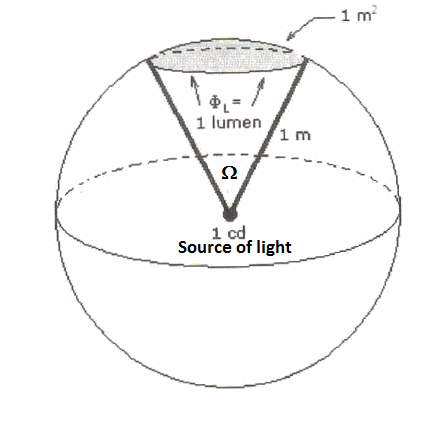
Figure 3: One Lumen definition.
One has to note that, the solid angle subtended in the figure is one steradian (through which one lumen is passing) but a light source of one candela produces 12.57 (4π) lumens in all directions (since the total solid angle is 4π steradian).The third photometric quantity of importance is illuminance and is measured in the SI unit of lux or British unit of foot-candle. It is defined as the luminous flux per unit area. Figure 4 shows the geometry for producing one lux and one foot-candle of illuminance
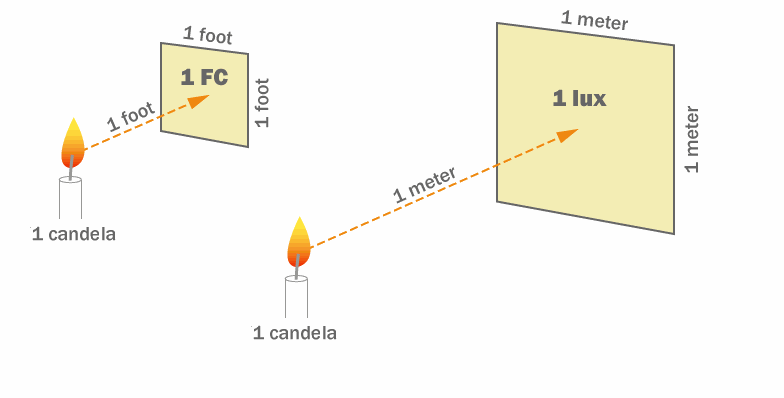
Figure 4: Definition of lux and foot-candle. The luminous flux is one Lumen.
If a candle source of luminous intensity one candela is placed at a distance of one meter from a 1 m2 frame, the luminous flux going through the surface is one lumen and the irradiance (luminous flux/unit area) is one lux. The irradiance (in unit of lux) is calculated by dividing the total luminous flux illuminating a surface by the area of the surface. So, for example, if 10 lumens of luminous flux is falling on a 5 m2 surface, the illuminance on that surface is 2 lux. In case of foot-candle, the candle source is placed at a distance of one foot from a foot squared area frame (The luminous flux is still one lumen) and irradiance of the surface is 1 lumen/ft2 or a foot-candle. Illuminance is the photometric quantity that is readily measured by inexpensive light meter devices. Two factors affect the illuminance of a surface from a source of fixed luminous intensity. The first is the distance of a light source from the surface so larger distances reduce the illuminance and smaller distances increase it. The second factor is the angle of illumination which causes illuminance to vary with the cosine of the angle of incidence (Highest illuminance at normal incidence).
The fourth photometric quantity of importance is called “exitance” and is defined as the reflected illuminance from surfaces. Multiplying the illuminance of a surface by its reflectance yields exitance. Obviously white surfaces have higher exitance as compared to darker surfaces. The unit of measurement for exitance is the same as illuminance because reflectance is a unitless parameter and hence exitance is also measured in units of lumen/ft2 (foot-candle) or lumen/m2 (lux).
Finally the fifth photometric quantity of importance is called luminance and is measured in units of candela/m2 in SI units or candela/ft2 in British units. Luminance is defined as the intensity of light emitted from a surface per unit area in a given direction. It is related to how we see objects and also involves reflectance. However, reflectance from an object could be specular (such as in case of a mirror which is more directional) or diffuse (where reflected photons are scattered in all directions). That is the reason why luminance takes into account the solid angle formed between the reflecting object and the observer’s eye. The reflectance of a reflecting object and a mirror like object might be both very high, but in case of diffuse reflectance, the photons are scattered in a wider angle as compared to mirror like reflection (also called specular reflection). Hence luminance observed from a mirror-like object is more directional. Figure 5 shows the geometry for luminance and also depicts all the other important photometric quantities except exitance.
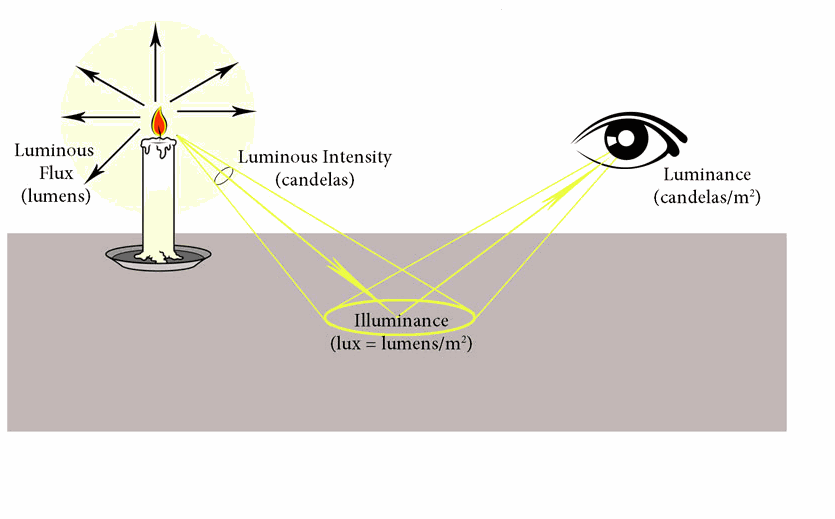
Figure 5: Important photometric quantities are shown in the figure. For exitance imagine reflected light from the surface in all directions (diffuse reflection).
Another way to evaluate light sources besides measuring photometric quantities is to evaluate them based on colorimetry or science of colours.
An important colorimetric factor is colour temperature. When one heats a blackbody radiator (Or in other words Planckian radiator), it changes colour from red to yellow to blue and white with increasing temperature. This association of a colour with an actual temperature of a blackbody radiator which emits that colour is called colour temperature. In order for an object to have a colour temperature of say 3000 K, it does not have to be necessarily at that temperature. For example, a LED lamp could be at room temperature but could have a colour temperature of 3000 K based on the relation of the colour it emits to a black body at that temperature. If one is looking at the colours emitted by non-Planckian (objects that are not black body radiators or perfect emitters), the term Correlated Colour Temperature (or CCT) is used. In order to find the colour temperature of a light source, one needs to calculate the chromaticity coordinates first. The chromaticity coordinates are calculated using the spectral power distribution and some mathematical calculations. They are specified by two coordinates x and y and are shown in figure 6.
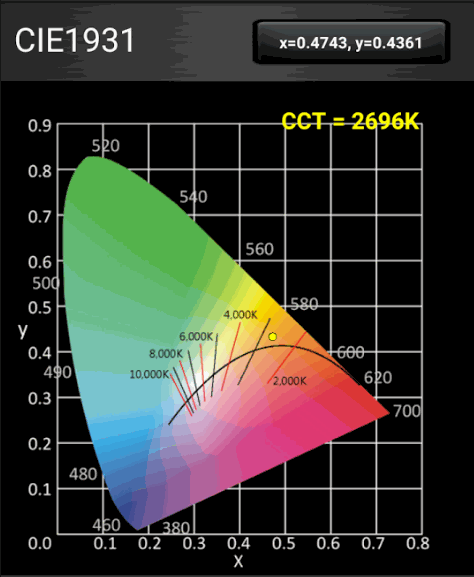
Figure 6: Chromaticity coordinates of a light source are shown by a yellow dot.
In the picture above the chromaticity coordinates have been calculated as 0.4743 and 0.4346 and is shown by a yellow dot. The enclosed curve contains different colours with the boundaries corresponding to monochromatic light. All the blackbody radiators fall on the black curve with different colour temperatures and if a source falls sufficiently close above or below the blackbody curve (In the figure, the measured source falls above the black curve as shown) then one can associate a “correlated colour temperature” with the source. The isothermal perpendicular black and red lines help in identifying the CCT. For the case of this source, the CCT is 2696 K.
Another important colorimetric parameter is the CRI index Ra which has been proposed by CIE (The French acronym for International Commission for Illumination) and have been used extensively by the lighting industry. Ra is the fidelity index (with a maximum of 100 and minimum of any number, even negative) which describes the effect of a light source on colour of objects as compared with the effect of a Planckian source on the appearance of objects. Figure 7 shows the different colour appearances of a red apple under different light sources with decreasing CRI index from left to right although the colour temperature is the same for all of them at 2700 °K.

Figure 7: CRI index variation indicates colour appearance change under different light sources.
One can see that for the far right picture, the apple looks very pale and its real colour is not properly shown and hence it is associated with a low CRI index (or Ra) value of 70. The far left apple has a natural colour and has a high CRI index score of 97.
Although the CRI index has been used to evaluate colour rendering, it can’t distinguish between over-saturated and undersaturated colour appearances under a light source. Figure 8 shows the colour of an object under two different sources of illumination with the same CRI index and colour temperature.
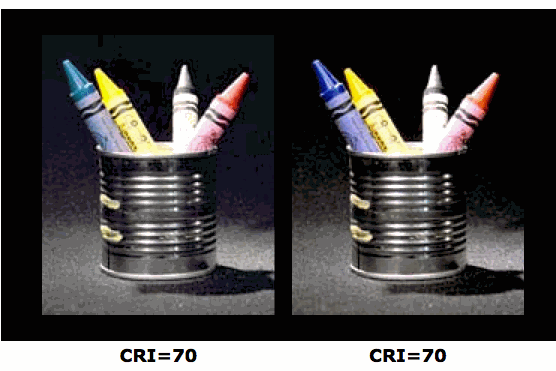
Figure 8: Same CRI index but different colour appearance specially for the blue colour.
For the left picture the blue colour appears to be undersaturated and for the right picture the blue colour is over-saturated. Although the CRI index is the same for both (Ra=70), the standard is unable to distinguish between the two cases. The reason is that the CRI index only specifies how far away the test source is from the true black body illumination source. It does not provide any information about saturation or desaturation of colours. For this reason the Illuminating Engineering Society of North America (IES) has come up with a different standard called IES-TM-30-15. In this new standard instead of only one fidelity index Ra, there are two indices Rf and Rg. Rf is the fidelity index and varies from 0-100 and Rg is the gamut index (evaluates saturation or unsaturation of colours) which could have values above 100 (For normal light source it varies from 60-140). Rg value of more than 100 indicates saturated colours and Rg values below 100 indicate desaturated colours. A combination of Rf and Rg can quantify the colour rendering much better than only a single fidelity index of Ra. Figure 9 shows a plot of Rg vs. Rf with the apex of the triangle corresponding to a perfect black body radiator
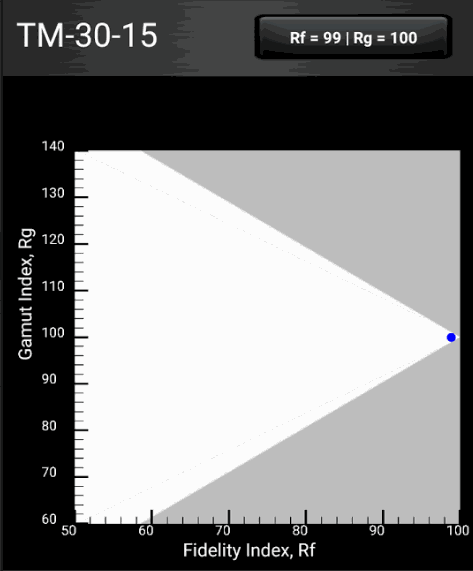
Figure 9: TM30-15 plot of Rg vs. Rf. The source (at the apex) is nearly a blackbody.
Finally, another important colorimetric parameter is Duv (uv should be in subscript format) which provides information on the distance and direction of colour shift from the blackbody curve on the CIE 1960 u-v coordinates (There are several versions of CIE diagrams such as CIE1936, CIE1960 and CIE1974). When Duv (uv should be in subscript format) is close to zero, the light source is close to a blackbody source and is ideal. Figure 10 shows the Duv on the CIE 1960 diagram. Notice that Duv could have a positive or a negative sign depending on the chromaticity coordinates of the source.
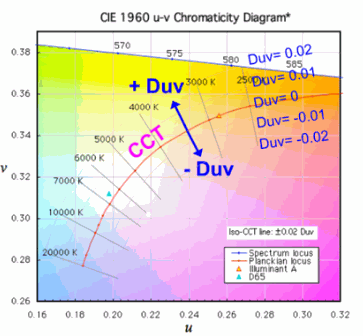
Figure 10: Duv can have a negative or positive sign.
Two sources could have the same CCT but could be on either side of the blackbody curve (positive and negative Duv) and therefore produce different colour rendering such as shown in figure 11.
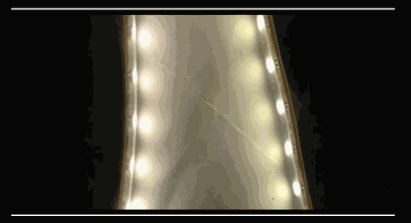
Figure 11: Two sources with the same CCT but positive and negative Duv.
Therefore colour temperature alone may not be sufficient to demonstrate colour rendering. The sign and magnitude of Duv needs to be taken into account. Figure 12 shows the two sources with the same CCT but in different sides of the blackbody curve.
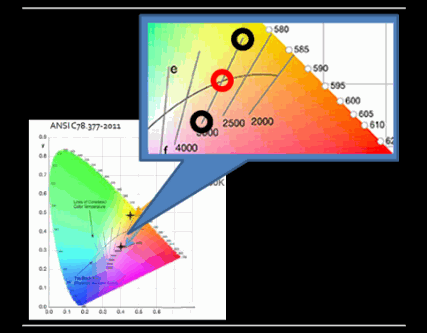
Figure 12: Two sources have the same CCT but opposite sign Duv.
The Lighting Passport (shown in Figure 13) smartphone spectrometer introduced by Allied Scientific Pro can measure illuminance in Lux, CCT, Duv, CRI index (Ra), Rf and Rg based on TM-30-15 standard, chromaticity coordinates, spectrum and much more. It is a smart investment for a lighting professional who would like to have accurate metrics.
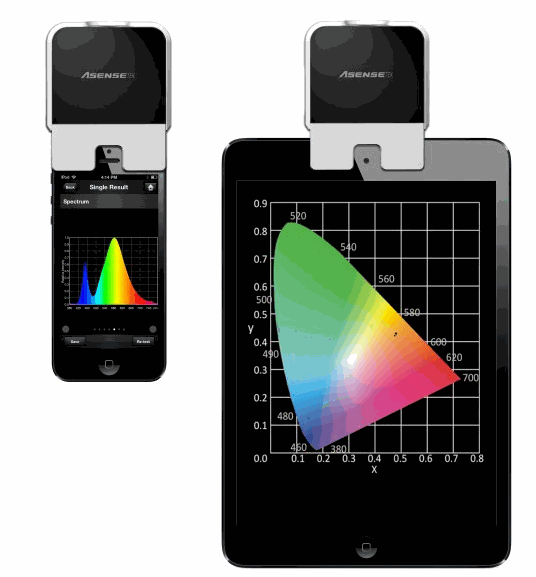
Figure 13: Lighting Passport, the first smartphone spectrometer.
Use the Lighting Passport from Allied Scientific Pro to evaluate your light sources based on photometric and colorimetric parameters.